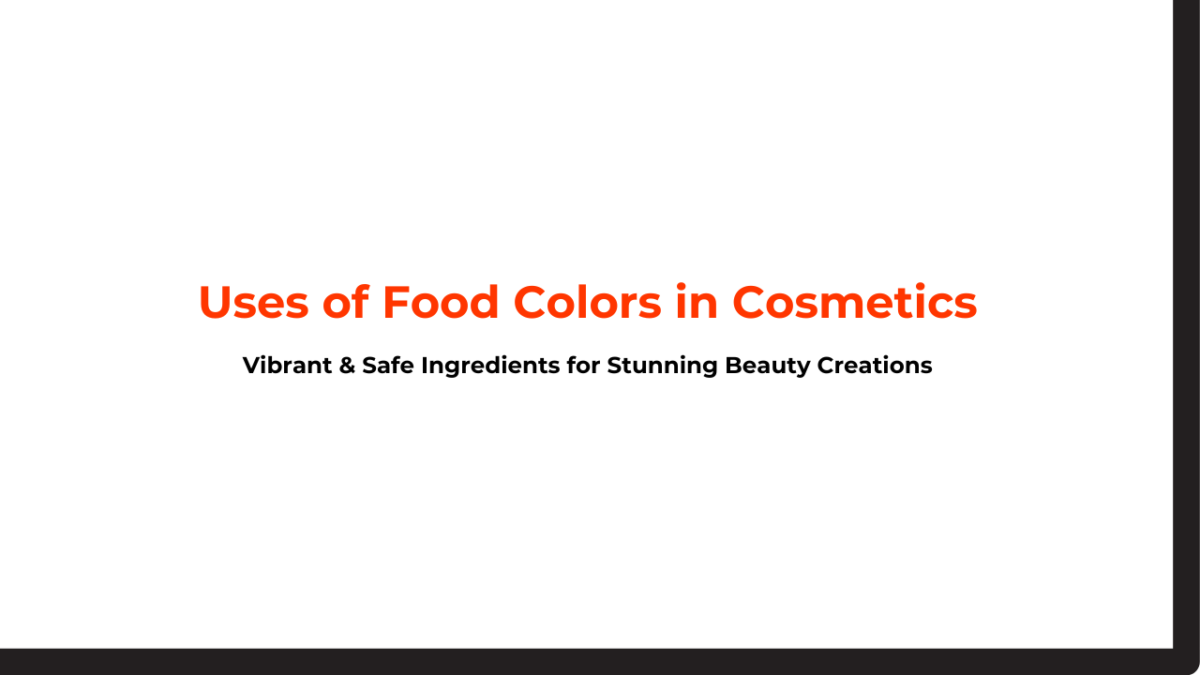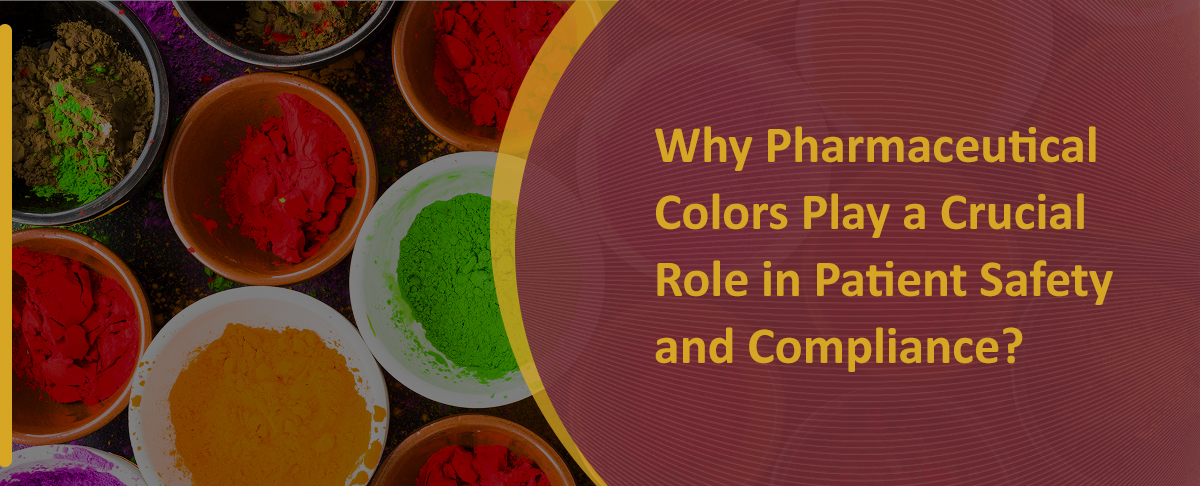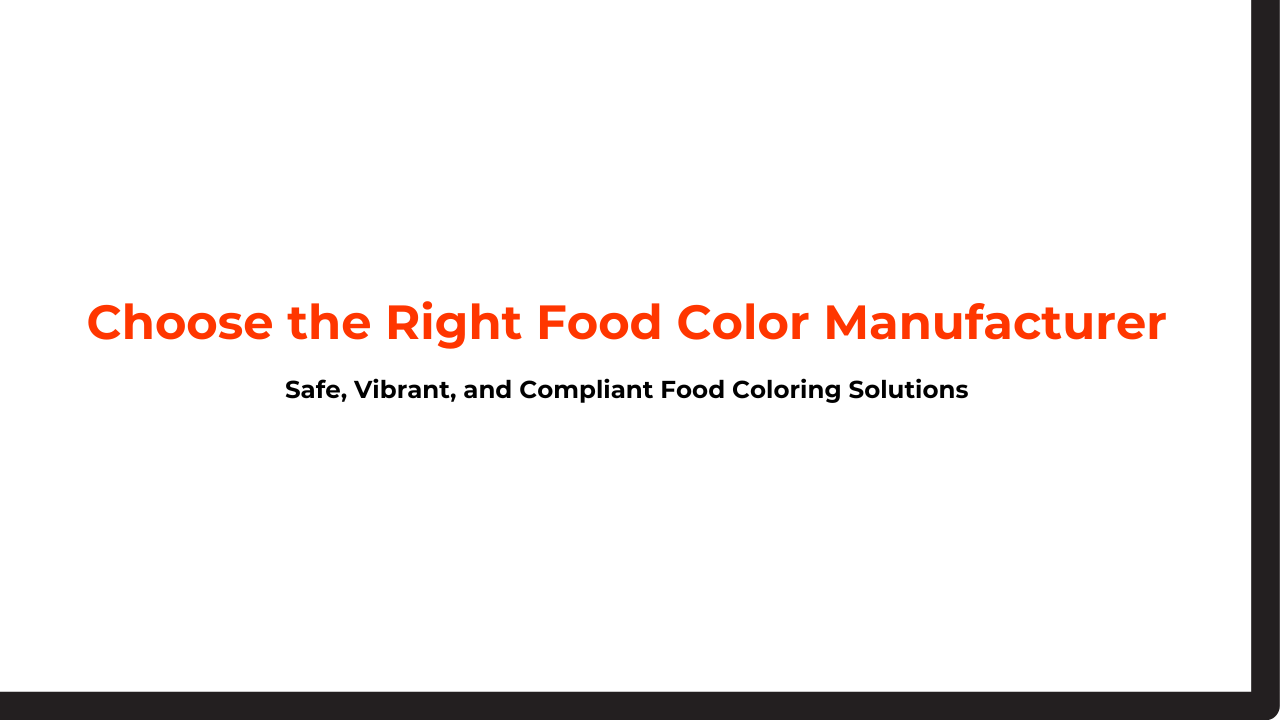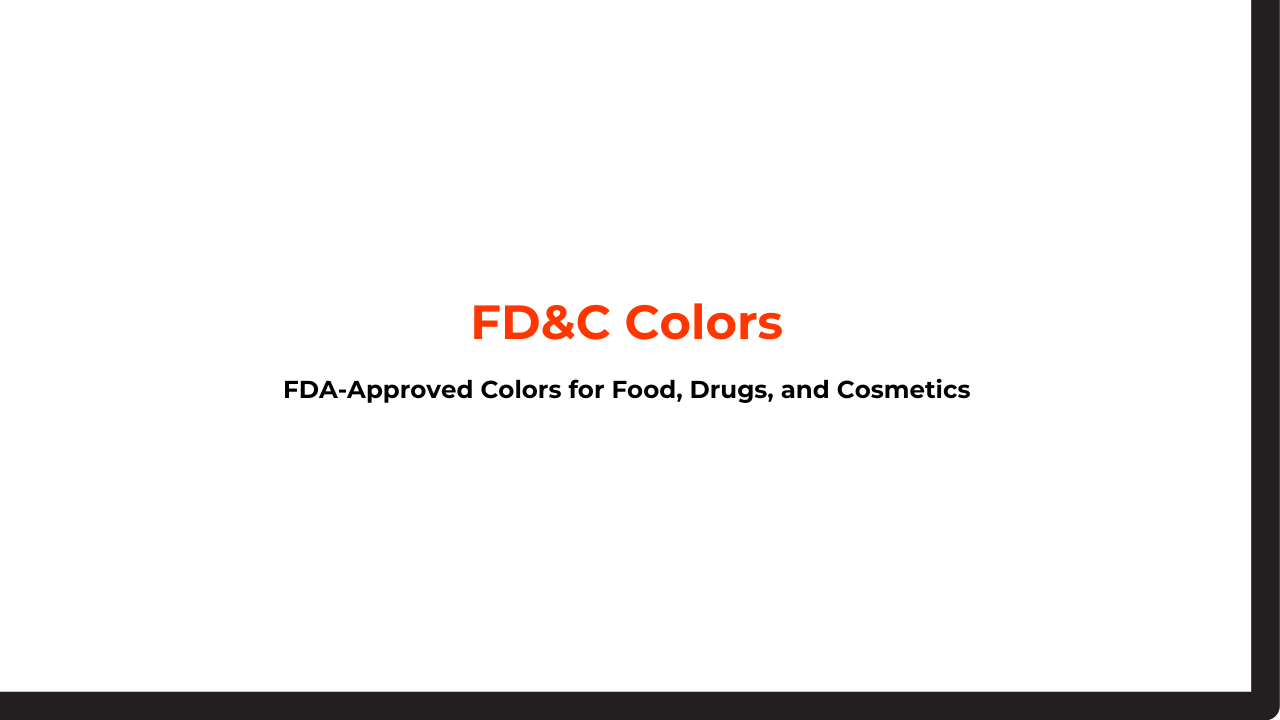Food colors, dyes, or colorants are additives used in food, cosmetics, and pharmaceuticals. Their primary use is to enhance the visual appearance of food products, making them more appealing to consumers. This blog will explore the uses of food colors or colorants in cosmetics.
In addition to food, beverage, and pharmaceutical products, food colors are widely used in cosmetics, providing a great sense of beauty to cosmetic products. Food colors can be natural or synthetically derived, depending on how they are produced. Choosing the right food colors is also a significant concern, whether used in cosmetics, food, or pharmaceutical dosage forms.
Natural food colors are derived from naturally occurring sources, including plants, greens, trees, vegetables, and animals, whereas synthetic food dyes are produced using coal-tar or petroleum-based chemicals. Whether you are a business or individual professional wondering about the uses of food colors in cosmetics, you’re already in the right place.
What are Food Colors?
What is food coloring? As the name suggests, “food colors” or “food coloring” are food dyes, pigments, or other substances that impart color to make food & beverages visually appealing, aesthetically pleasing, and interesting. Food colors are used as a food coloring agent for a variety of industrial applications, including but not limited to improved palatable value of products, easy identification, and longer shelf life.
In addition to cosmetics, the importance of food colors in pharmaceuticals can’t be overlooked, as they are the key to achieving the desired products.
Consumers today are more likely to be attracted to appealing and interesting products. Many companies are leveraging synthetic food colors in cosmetic formulations such as lipsticks, nail polish, eyeliner, lip balm, face creams, shampoo, and other personal care products.
Why are Food Colors Used in Cosmetics
Food colors, also known as food dyes or color additives, are widely used in cosmetics to make products more attractive and decorative by adding different colors or hues. Food colors are also used to identify products, hide discoloration, correct natural color variations, or provide color to colorless products.
These food colors offer higher color consistency, greater stability, and longer shelf life, and they are more cost-effective than natural food dyes. Here are the main reasons why food colors are used in cosmetics:
- Enhance Appearance
The use of food colors or color additives is to make products more attractive and appealing.
- Correct natural color variations
Food colors are widely used to offset color loss and correct natural color variations from environmental factors.
- Identify Products
Food colors help users easily determine products such as nails, hair extensions, artificial nail builders, concealers, and makeup items.
- Create product image
Color additives are crucial in making products easy to identify like never before.
- Hide Discoloration
Food dyes are widely used to maintain color, especially when the product ages.
Types of Food Dyes for Cosmetics
FD&C colors are synthetic dyes certified and approved by the U.S. Food and Drug Administration (FDA) for use in food, drugs, and cosmetics. There are a variety of FD&C dyes and their uses for coloring in various industrial applications. These food dyes or color additives are used to increase the appearance of cosmetic products, offset color loss, and correct color variation during storage or processing.
According to FDA rules and regulations, food colors or color additives must demonstrate their safety at the level of use intended before they can be added to cosmetics, food, or pharmaceuticals. The regulations specify what the FDA requires when it approves the use of a food dye or color additive in these products.
Food dyes are most commonly used in cosmetics to make lipsticks, shampoo, nail polishes, hair dyes, and other personal care products aesthetically pleasing and attractive. Here are some of the most important things you should know about food colors and their uses in cosmetics:
- Natural Dyes
Many natural dyes are used in cosmetics, including indigo, which is extracted from the fermented leaves of plants.
- Synthetic Dyes
These are dyes or colorants derived from coal tar or petroleum-based chemicals in a laboratory.
- Lake colors
A lake color is a mixture of soluble dye and metallic salt that precipitates the soluble dye into an insoluble form.
Why is color important in cosmetics?
The role of food color in branding goes beyond purely aesthetic and is more appealing. The color tones used on cosmetic products and packaging must reflect a brand’s identity, convey the value of a product to consumers, and instill brand trust.
Are Food Dyes Safe?
Research shows no evidence to suggest that food or water-soluble dyes used in cosmetics harm the human body. However, some people think that many FD&C colors can be harmful.
If used properly, it can be harmful for the body to absorb these colors, as they can drain the body of oxygen, resulting in less energy and an inefficient body.
Conclusion
The bottom line is that food colors are used not only in food and beverages but also in cosmetics, pharmaceuticals, and personal care products. Food colors are widely used to impart different colors, hues, and shades for a comprehensive range of cosmetic products to achieve the desired color more efficiently. Food colors in cosmetics help businesses produce the desired products with different hues and shades.
If you’re a business looking for quality food colors or synthetic food dyes for cosmetics, food, or pharmaceuticals, look no further than Hridhan Chem Pvt Ltd. Hridhan Chem is a reputable manufacturer and exporter of dyes and pigments that can be used in food, cosmetics, and pharmaceuticals. For more information on the wide range of synthetic dyes and pigments we produce at our manufacturing facility, contact us today.
Frequently Asked Questions
Food and drink have many sensory aspects related to food dyes or colors used in the industry. Consumers may also choose a product based on its freshness, flavor, and likelihood of being fresh and tasty.




